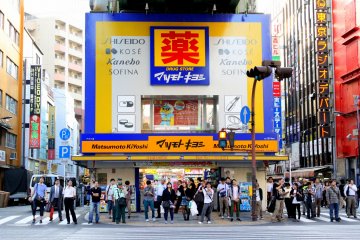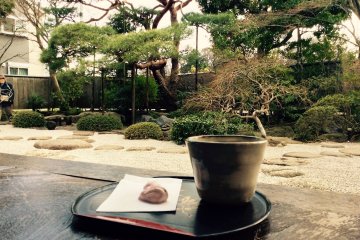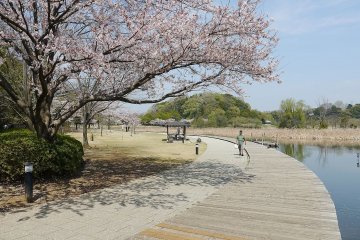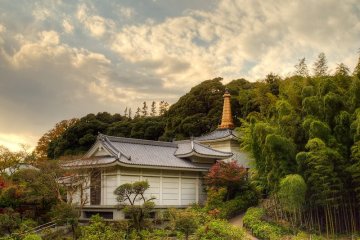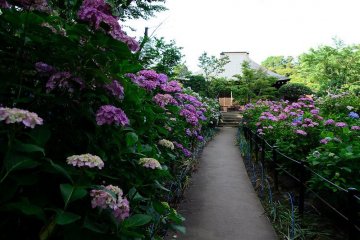Once the site of the manor house of the prestigious Hiraga family of the Genji Clan, this Nichiren Buddhist temple is today known as “the hydrangea temple”, and is famous for its four seasons of flower displays.
Hondoji Temple was dedicated in the 13th century to the teachings of Nichiren, a Buddhist priest who founded his own version of Mahayana Buddhism. Three of his direct disciples were sons of the Hiraga family who made the temple their sanctuary. At its height, Honjoji was ranked among the more significant temples in the region, sharing prestige with the great temples of Kamakura. However, during the Meiji Restoration and its dissolution of many temples, Hondoji declined in status. Today, it is still no less a destination for pilgrims in search of solace, and fans of gardens and flowers.

The approach to the temple from Kita-Kogane Station suggests the importance that this temple once held. A short walk leads to an avenue of stately cedar trees. Along this street, which still has vestiges of the temple shopping street, you will find an old fashioned soba shop, pickled vegetable vendor, and a florist shop where patrons of the temple and visitors to the cemetery can buy offerings.
The temple precincts have 10 different structures established over a great span of eras. The temple gate, erected in the 17th century, is a towering wall of vermillion and houses two finely carved Niyo guardians. The gate is shaded by mature maple trees. Just inside the gate is a five story pagoda enshrining a portion of the remains of Indian Prime Minister Jawahal Nehru, a testament to the temple's international significance. Set on the hillside, the pagoda is surrounded by a grove of cherry trees that bloom in March and April, and at the foot of the stairs, a variety of hydrangeas show their colors in June.
The main hall, dating from 1651, is at times a venue for modern and traditional music performances. This hall and the statuary hall nearby are repositories for treasures – manuscripts, a clerical robe, and a rosary related to Nichiren and his disciples.
One of the big draws for the faithful is a miraculous well next to the statuary hall. These waters, associated with a Buddhist matriarch, are said to ease childbirth and aid nursing. To attest to the power of the waters, the gingko tree that shades it has pendulous growths that resemble a mother’s breasts.
For nature lovers, the big attractions are the profusion of colors. This temple is gorgeous in spring when cherry blossoms and magnolias bloom. Later, in the rainy season, a forest of hydrangeas of many varieties provides relief from the gloom. Around the autumn equinox, a carpet of higanbana, or spider lilies, provides brilliant color. In late November, the canopy of maples contrasts with the weathered temple eaves. Note that in peak seasons, an admission of 500 yen is charged.
On a visit to Matsudo City, budget some time for a ride on the last man-powered ferry on the Edo River at Yagiri Crossing, and a visit to Tojotei, the mansion of a Tokugawa scion. You’ll work up an appetite. Lunch at Tomita Shokudo or Tonikaku for ramen, or the Matsudo Nanbu Ichiba market for fresh fare.



